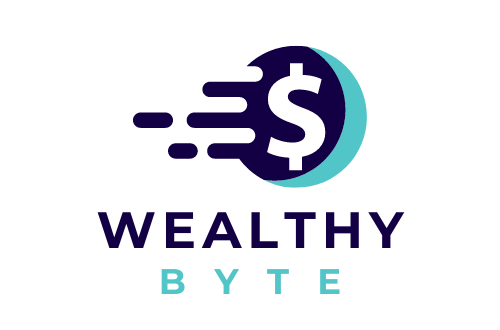
In a dynamic and burgeoning construction market, the ability to save costs on new projects is a crucial factor for success.
According to GlobalData, the US construction market witnessed remarkable growth, reaching a size of $2.1 trillion in 2022. Projections indicate a sustained upward trajectory with an anticipated annual average growth rate (AAGR) of more than 4% from 2024 to 2027.
This growth is underpinned by substantial investments in key sectors such as energy, transportation, housing, and manufacturing.
As construction companies navigate this expansive market, the imperative to optimize costs on new projects becomes increasingly significant. This article discusses the five strategic approaches that construction firms can adopt to enhance cost-effectiveness without compromising on quality.
-
Pre-Construction Planning and Optimization
Pre-construction planning ensures that resources are strategically allocated, and potential challenges are proactively addressed. Thorough site analysis is a foundational step. It involves detailed assessments that uncover potential obstacles and prevent costly rework during construction.
Additionally, value engineering focuses on identifying and implementing cost-saving alternatives for materials, methods, or project scope. This approach optimizes project efficiency without compromising quality.
Lean construction practices further contribute to cost savings by emphasizing waste reduction, continuous improvement, and collaborative workflows. According to White Cap, adopting lean principles involves examining routine tasks on large projects to identify areas with a high degree of repetition.
This often reveals that 60 to 80 percent of construction work is repetitive. Incorporating these tasks into a comprehensive action plan will help the construction team to work towards correcting deficiencies. Embracing lean construction philosophies proves instrumental in achieving cost-effectiveness and enhanced project efficiency and overall success.
-
Procurement and Material Management
To optimize costs, construction companies can adopt strategic approaches in sourcing materials. Firstly, shopping around and negotiating with multiple suppliers allows for competitive bids, potentially securing bulk discounts for materials. Exploring alternative materials or local sources further minimizes transportation costs and contributes to sustainable practices.
Implementing effective inventory control mechanisms is equally essential. By leveraging efficient inventory management systems, construction companies can avoid overstocking or under-stocking. This approach not only ensures a judicious use of resources but also streamlines the overall project timeline.

In the digital age, the integration of digital procurement platforms is a transformative step. These platforms facilitate seamless communication with suppliers, streamline the ordering process, and enable real-time tracking of deliveries. Similarly, implementing AP automation software can enhance financial processes, reducing manual errors and accelerating payment workflows to support cost-effective project management. Leveraging digital solutions will enhance transparency, minimize manual errors, and optimize costs through data-driven decision-making.
-
Construction Efficiency and Technology
Embracing construction efficiency is necessary for construction companies aiming to optimize costs and enhance project outcomes. The adoption of construction management software stands out as a smart strategy. This software enables real-time tracking of project progress, efficient resource scheduling, and the early identification of potential cost overruns.
Utilizing efficient tools presents another transformative avenue. Construction tools improve efficiency and reduce labor costs. From bricklaying to concrete pouring, they contribute to precision and speed, resulting in both time and cost savings. To learn more about technology and tools that work in the construction sector, visit SitePro.
Moreover, considering the cost-efficiency angle, construction companies can explore the option of renting equipment. Renting allows companies to access cutting-edge technology without the upfront investment and maintenance costs associated with ownership.
SitePro Rentals notes that this flexibility in equipment usage aligns with project-specific needs, contributing to substantial cost optimization. In essence, the convergence of construction efficiency and technology, coupled with strategic equipment rentals, positions businesses for enhanced productivity.
-
Risk Management and Contingency Planning
Proactive risk assessment is foundational. Identifying and mitigating potential risks early on can prevent costly delays and rework. By anticipating challenges, construction companies can implement measures to address them before they escalate.
Contractual risk allocation is equally vital. Clearly defining responsibilities and risk allocation in contracts with subcontractors and suppliers helps establish accountability and prevent disputes that could lead to cost overruns. A well-defined contractual framework ensures that each party understands and manages their share of the project’s risks.
Contingency planning further reinforces a construction project’s resilience. Having a comprehensive plan in place to manage unforeseen circumstances helps minimize their impact on project costs.
According to For Construction Pros, predictable dangers can be addressed through thoughtful planning. Some of them include pre-ordering materials, setting up labor camps, or having backup procedures for information technologies. Anticipating and strategically managing these risks ensures a more predictable and cost-effective construction process.
-
Sustainability and Long-Term Savings
Choosing energy-efficient materials and designs is a fundamental strategy. Sustainable materials, coupled with thoughtful design principles, contribute to lower energy consumption over the building’s lifespan. This translates to reduced operational costs.
Waste reduction and recycling practices further contribute to long-term savings. Minimizing material waste through efficient construction processes not only reduces disposal costs but also reflects a commitment to sustainable practices.

Investing in high-quality materials and construction methods is a fundamental aspect of long-term cost-effectiveness. Buildings constructed with durability in mind experience fewer maintenance issues, leading to reduced long-term maintenance costs.
In conclusion, the implementation of cost-saving strategies emerges as a crucial pathway for construction companies to weather challenges and gain a competitive edge. The strategies discussed contribute to improved profitability and heightened project success.
It is paramount for companies to recognize that successful cost management is not a one-time endeavor but a continuous, dynamic process. Ongoing monitoring, evaluation, and adaptation are essential components of navigating the ever-changing construction landscape.
By adopting a proactive and strategic approach, these companies can forge a resilient foundation for sustainable success. In doing so, they enhance their financial bottom line and contribute to the evolution of a more efficient, cost-effective, and competitive industry.















